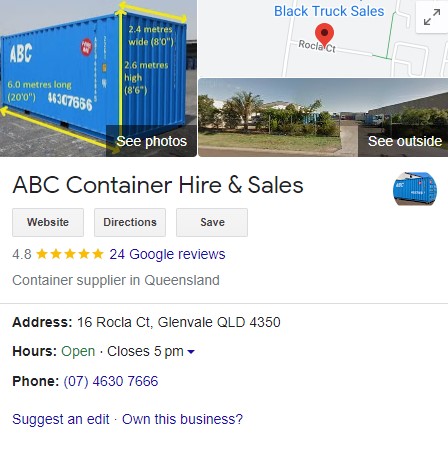Navigation
Dropdowns
- Shipping Containers +
- New Shipping Containers +
- Used Shipping Containers +
- Hire Shipping Containers +
- Locations +
- Shipping Container Offices
- Tools +
Shipping Container Scammers
How to identify scammers and protect yourself
Unfortunately, in the shipping container industry there is a LOT of scammers. These scammers will try to trick you into paying for containers that don't exist or containers that are in a much worse condition than they say they are. This guide will help you identify scammers, including common techniques that they try to use and help you to protect yourself when you buy a shipping container. By following these steps, you can be sure that you're not going to be scammed.
1. View the container in person
Viewing a shipping container in person is a crucial step in the purchasing process, especially if you're buying a used container. Physical inspection allows you to assess the container's condition firsthand, checking for any potential damage or issues that might not be evident in photographs or descriptions. You can look for rust, structural damage, holes, faulty doors or seals, and the condition of the paint. It's also an opportunity to ensure the container matches the seller's claims in terms of dimensions, type, and other features. If you're unable to visit in person, consider hiring a reputable third-party inspection service to perform this task. They will provide an unbiased assessment, giving you confidence in the accuracy of the container's described condition. Remember, a physical check can not only prevent you from getting scammed but also save you from future repair costs and hassle.

2. Cross reference their details
When it comes to preventing shipping container scams, one effective measure is to cross-reference the details provided by the seller or the shipping company. Scammers often create false identities and use fraudulent information to lure unsuspecting buyers into their schemes. Before making any financial commitments or sharing sensitive information, it is crucial to verify the legitimacy of the seller or the shipping company. You can cross-reference their contact information, business registration, and address through reputable sources, such as government websites or established business directories. Additionally, reaching out to previous customers or reading online reviews can provide valuable insights into the seller's reputation and reliability. By conducting thorough cross-referencing, you can safeguard yourself against falling victim to shipping container scams and make informed decisions with confidence.

3. Understand the market price
A critical step in avoiding shipping container scams involves a deep understanding of the current market prices for both new and used containers. Prices can vary significantly based on factors such as the container's size, condition, and the shipping costs associated with its location. Conducting comprehensive market research before making any purchasing decisions will allow you to identify and avoid offers that appear suspiciously low or disproportionately high. Remember, if a deal seems too good to be true, it probably is. Always compare prices from multiple suppliers and consider reaching out to professionals in the industry for their input. This knowledge can be your first line of defense against falling victim to fraudulent schemes.

4. Use a secure payment method
Employing a secure payment method is a vital step in preventing shipping container scams. It's highly advised to use payment options that offer built-in protection against fraud, like credit cards, PayPal, and bank transfers. These methods generally offer buyer protection mechanisms that can help you in the event of a dispute. Be cautious with sellers who insist on cash payments, wire transfers, or cryptocurrency transactions, as these methods can be more difficult to trace and recover if a scam occurs. Ideally, opt for a payment service that provides an escrow option, where the funds are held by a third-party until the transaction is complete. This way, you retain control over your funds until you're fully satisfied with your purchase, significantly limiting your risk.

5. Get all of the information
Comprehensive documentation is your ally in preventing shipping container scams. Ensure you gather all the necessary information about the container and the seller. This includes the container's identification number, its physical condition, age, history of repairs, and any certifications it may have. When it comes to the seller, verify their full name, physical address, contact information, and business registration details. All transaction details should be clearly written in a formal contract or invoice. Never hesitate to ask questions or seek clarification for anything that seems unclear or suspicious. The more information you have, the better equipped you are to identify inconsistencies that could signal a scam.



